 | Joseph Denison - Mechanics - 1841 - 210 pages
...by one of the inclined sides ; that is, P = — S TT By theorem 1, P ; R ; ; — ; S ; and because the product of the means is equal to the product of the extremes, PS=R|; and dividing each of these equals by S, K! From theorem 2 we derive the following rule for finding... | |
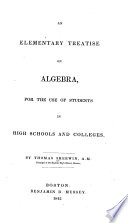 | Thomas Sherwin - Algebra - 1842 - 326 pages
...denominators 5 and d, we have ad = b c. But a and d are the extremes, and 6 and c the means. Hence, In any proportion the product of the means is equal to the product of the extremes. 2. Suppose we have ad = bc. Dividing both members by 6 and d, we have r = -, or a : b = c : d. Hence,... | |
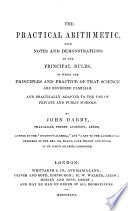 | John Darby (teacher of mathematics.) - 1843 - 236 pages
...the second T8T, and they are equal ; that is 4 : 6 :zz 8 : 12, Therefore £ = TV Whence 4x12:=eX8. In Proportion, the product of the means is equal to the product of the extremes; therefore 4 : 6 :: 8 : 12. In this proportion the 4 and 12 are the extremes, and the 6 and 8 the means.... | |
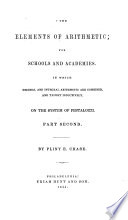 | Pliny Earle Chase - Arithmetic - 1844 - 246 pages
...consequents may, therefore, change places in a variety of ways, the proportion always continuing so long as the product of the means is equal to the product of the extremes. Then, whenever one of the extremes and the two means are given, to find the other extreme, Divide the... | |
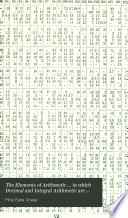 | Pliny Earle Chase - 1844 - 258 pages
...consequents may, therefore, change places in a variety of ways, the proportion always continuing so long as the product of the means is equal to the product of the extremes. Then, whenever one of the extremes and the two means are given, to find the other extreme, Divide the... | |
 | Emanuel Swedenborg - Physiology - 1845 - 602 pages
...that the rectangle of the means is equal to the rectangle of the extremes ; or as in arithmetic, that the product of the means is equal to the product of the extremes. Hence, the action of the second and third being equal to the action of the first and fourth, we have... | |
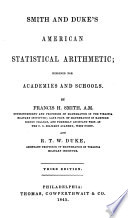 | Francis Henney Smith - Arithmetic - 1845 - 300 pages
...fourth by multiplying the second and third terms together, and dividing by thefirst. For, by Art. 178, the product of the means is equal to the product of the first term by the fourth. The fourth term must therefore be equal to the product of the means divided... | |
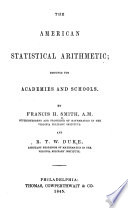 | Francis Henney Smith - Arithmetic - 1845 - 710 pages
...fourth by multiplying the second and third terms together, and dividing by the first. For, by Art. 178, the product of the means is equal to the product of the first term by Ihe fourth. The fourth term must therefore be equal to the product of the means divided... | |
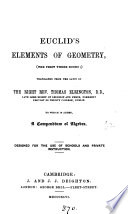 | Euclides - 1846 - 272 pages
...dividing the antecedent by the consequent is called the ratio. If four quantities are proportional, the product of the means is equal to the product of the extremes; in the proportion a : 6 ; ; c : d, a and d are the extremes, b and c the means. Wherefore, in order... | |
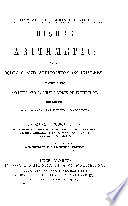 | James Bates Thomson - Arithmetic - 1847 - 434 pages
...the work is right. (Art. 500.) Demonstration. -If four numbers are proportional, we have seen that the product of the means is equal to the product of the extremes ; (Art. 498 ;) therefore the prDcliict of the second and third terms must be equal to that of the first... | |
| |